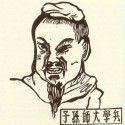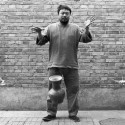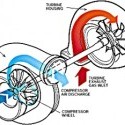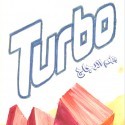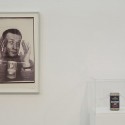 |
 |
|

THREE LESSONS LEARNED FROM SUN TZU
14 November 2012, Cervera de los Montes

Sun Tzu was a Chinese general and military strategist in the sixth century BCE. He is the author of the book Art of War. Lesson 1 learned from Sun Tzu
Turbo Realist art is based on deception. Hence, when we are fighting against the enemy, we must seem defending it; when we are doing propaganda, we must appear neutral; when we are protesting, we must make the enemy believe we are inactive or preoccupied with aesthetics. Art is a beautiful undercover operation. This is the art of war and the war of art.
Lesson 2 learned from Sun Tzu
Sun Tzu wrote: Be extremely subtle, even to the point of formlessness. Be extremely mysterious, even to the point of soundlessness.
Protest in art is protest without protest. Political and critical art is a context totally domesticated by the authorities. Therefore the Turbo Realist strategy must be subtle and cryptic because the direct protest in art is like alcohol-free beer in Saudi Arabia.
Lesson 3 learned from Sun Tzu
Speed is the essence of Turbo Realism. Take advantage of the enemy's unpreparedness; travel by unexpected routes and strike it where it has taken no precautions.
MANUAL FOR THE TURBO REALIST CELLS, PART 1
13 November 2012, Cervera de los Montes

1.
Turbo Realism was born to fight Turbo-capitalism (a concept launched by American military strategist Edward Luttwak, the author of the book Coup d'État: A Practical Handbook.) What can we learn from Dr. Luttwak? A coup of art consists of the infiltration of a small, but critical, segment of the art and cultural apparatus, which is then used to displace the government from its control of the remainder.
2.
A lesson learned from chairman Mao. Remember that art is neither a dinner party nor a bed of roses. It is a struggle to the death between the future and the past, socialism and capitalism.
3.
No politics but provocation.
No protest but making the enemy visible.
No propaganda but confusing messages.
No arguments but hyperboles.
4.
Make sure that the art and the attitude are always conceptually and aesthetically on the highest level. Turbo Realist art must be irreverent, excessive, controversial, incorrect, irritating, ironic, bad behaving, playful - and beautiful or ugly.
5.
Achieve fame and notoriety in the art world. Get famous and rich or die trying. The most powerful artist of the world at the moment, Ai Weiwei, who belongs to our bourgeois enemy troops, is also the richest and the most famous artist. Learn from your enemies and respect them before annihilating them.
OPERATIONAL OBJECTIVES OF TURBO REALISM
11 November 2012, Helsinki

On Friday, I gave a talk about Turbo Realism at a seminar of Baltic Circle International Theater Festival. I think that the theater people didn't know who I was and their reception wasn't very enthusiastic - though Eva, the director of the festival is my big fan. On Saturday, I had a long dinner with old and new friends and I decided to read my paper again. Now I was hailed by one of the most powerful Finnish literary critics. One part of my talk was about strategy. The hierarchy of actions consists of Strategy→ Operational objective → Tactic → Task. A strategy is a plan of action designed to achieve a specific goal. The goal of Turbo Realism is to support the revolutionary forces in the society to establish a global socialist dictatorship. The operational objective is to make audiences aware of the disasters of the capitalism and create revolutionary atmosphere. The tactic is to influence the audiences of art, above all, the intellectuals and the upper class. Turbo Realism attempts to gain a position of advantage over the adversaries exploiting the context of art and its institutions.
Turbo Realism is a powerful revolutionary weapon and the art is an important fighting front. Turbo Realism perturbs the ground ideologically before the revolution takes over.
There is in fact no such thing as art for art's sake, art that is detached from or independent of politics. All political leaders want to be photographed next to a flower painting, thus it is political art. Turbo Realism is not a flower painting. Nobody wants to be photographed next to Turbo Realism.
ARTISTIC STRATEGIES IN TURBO TIMES
07 November 2012, Cervera de los Montes

On Thursday, I’m once again off to Finland. Lately, it feels that I only live in Cervera de los Montes but work in Helsinki. This fall, I’ve been going once every month to the city where I was born.
Now I’ve been invited as the founder and the leader of Turbo Realism to speak at the seminar Artistic Strategies in Turbulent Times organized by the Baltic Circle International Theater Festival. Apropos, turbo and turbulent have the same etymology meaning movement, agitation, disturbance.
Other speakers are also turbo interesting: L. M. Bogad of the Clandestine Insurgent Rebel Clown Army and the Yes Men, Dana Yahalomi of the Public Movement and Jacob Wren, writer and maker of eccentric performances.
In the seminar four international (I hate this word) artists will perform and talk about their work from the strategic point of view. Is there a need for articulated long-term strategies? Is the concept of artistic mission relevant today? What is one’s life’s work? Do we need to plan ahead, even if we know that what we do today might not be relevant tomorrow?
I am going to read the Manifesto of Turbo Realism, its published appendix, unpublished and classified appendixes and the internal manuals including three lesson of strategy learned from general Sun Tzu who wrote in the sixth century BCE: Be extremely subtle, even to the point of formlessness. Be extremely mysterious, even to the point of soundlessness.
YOU WANT DRINKS LIKE KIPPENBERGER
03 November 2012, Cervera de los Montes

Melena Ryzik (New York Times): What do you do when you’re not performing?
PSY: I’m drinking. It’s my biggest hobby. I suppose that if you are drunk you can’t do PSY’s onstage Gangnam Style dance but to move in the art world you can’t be sober. James Crumley, the American author of hardboiled crime novels, wrote in his book The Wrong Case: Son, never trust a man who doesn't drink because he's probably a self-righteous sort, a man who thinks he knows right from wrong all the time. I want the curators, the museum directors, the gallerists and the collectors to trust me. I don’t do much networking nowadays but sometimes I get the feeling that I should meet art world people and that’s why I traveled yesterday 130 kilometers to the inauguration of Abdul’s new exhibition space 72 Truck in Madrid. You want moves like Kippenberger and that’s what I did: a brandy in a bar, four gintonics at the opening reception, a pisco sour before dinner, beer with the meal in Asiana Nextdoor (where two famous actresses got furios for my Kippi style drunkenness), a couple of vodka shots for dessert and to finish off a Cuba libre in José Alfredo (with my Cuban friend Alexis) before the illegal taxicab from my village arrived to pick me up from Gran Vía. Now I have a terrible hangover which reminds me that I was a hard working artist last night.
|
 |
 |
 |
 |
 |
| |
2020
2019
2018
2017
2016
2015
2014
2013
2012
2011
2010
2009
2008
2007
2006
|
| |

|
| |
| |
